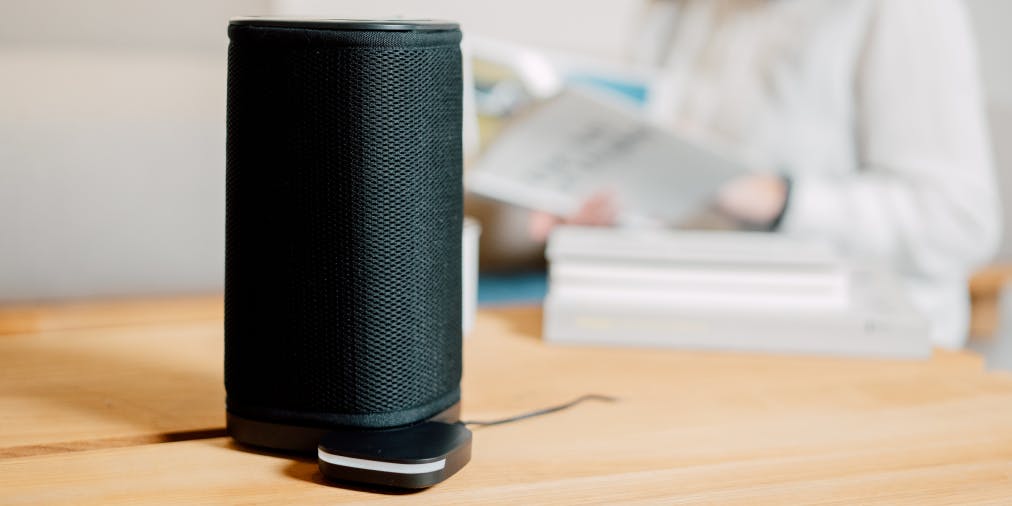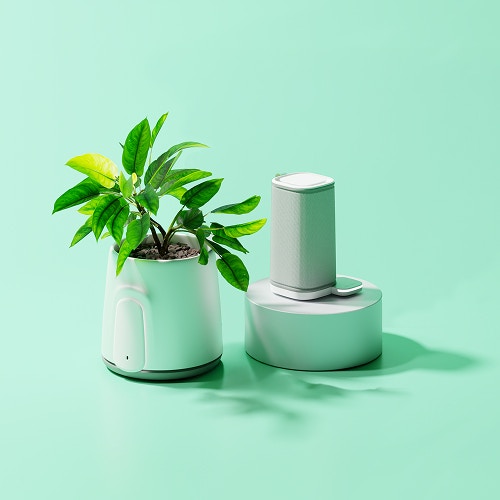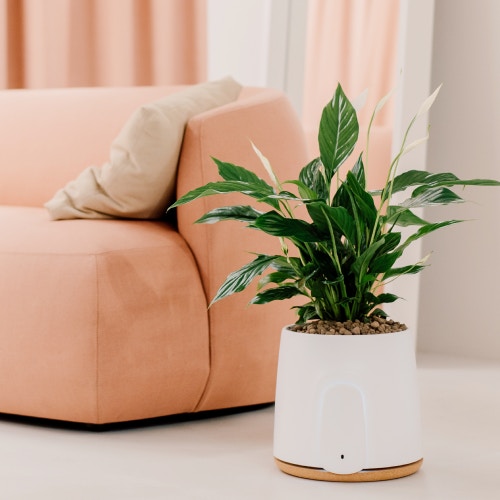
Why is indoor air pollution important in schools?
→
For the wellbeing of children and students, it’s important that the air they breathe inside their schools is healthy and clean.
- Air pollution in schools: a significant factor
- The causes of pollution
- Poor air circulation
- Furnishing materials
- Cleaning products
- Viruses and bacteria
- Fine Particles - What are the effects of indoor air pollution on children and students?
- Lack of concentration
- Immune system depression
- Boredom and apathy - How can indoor air quality in schools be improved?
- Air out the rooms
- Clean with natural products
- Wash your hands often
- Use an air purifier - Eteria, the indoor air purification and diffused monitoring system
Air pollution in schools: a significant factor
The environment within schools is one of the most important ones for our children and students because it represents the place par excellence where their cultural growth takes place and where they choose to discover their talents and passions to figure out what to do when they grow up.
School must therefore be a stimulating and safe environment to allow them to express themselves to the fullest according to their ages and abilities, given the large amount of time they spend in their classrooms.
In fact, every child and every student spends an average of 5 to 8 hours a day in educational institutions, and it is assumed that within this time span, they are put in the best possible conditions for their personal growth.
Unfortunately one significant factor has been put aside for a long time, but has been revived loudly lately: indoor air quality.
Contrary to what one might think, schools also have the problem of indoor air pollution. And it’s a factor that greatly affects both children and students (but also all the school staff who are there to support them in their education).
Contrary to what one might think, schools also have the problem of indoor air pollution. And it is a factor that greatly affects both children and young people (but also all the school staff who are there to support them in their education).
But how is it possible that the air in schools is polluted? Because various sources of pollution may be present within it that create an unhealthy microclimate for those who must breathe there.
Let’s see together what the sources of pollution are.

Poor air circulation
Not airing out classrooms, corridors and dining halls is one of the first causes of indoor pollution since it doesn’t allow the air to circulate to avoid the classic indoor air stagnation phenomenon.
Indoor air stagnation causes what we call “stale odor”, which is nothing but a large increase of these 3 factors in the air:
- Odors
- Volatile Organic Compounds
- CO2 (carbon dioxide)
All three of them, if inhaled for several hours, can be harmful to our health, especially for the most fragile individuals.
Furnishing materials
Although underrated, the materials from which furniture is made and in general of which the building is composed also play a huge role in the causes of pollution.
Unfortunately, many educational institutions find themselves in suboptimal conditions because they are still made of old materials and have dated furniture that isn’t carefully maintained.
If not properly controlled, these two situations can give rise to the occurence of mold, bacterial proliferation and the release of Volatile Organic Compounds.
Cleaning products
This may seem like nonsense, but in fact even the products used to clean surfaces and environments themselves contain pollutants and can be harmful if used in large quantities.
This is because these cleansers are made entirely with chemical products that contain high amounts of VOCs within them, which in the long run can lead to respiratory damage for those who inhale them.
Viruses and bacteria
Today like never before we know the speed in which viruses and bacteria propagate in the air, and everyone knows the effects these can have on our organisms. So if not adequately ventilated and protected, indoor environments of schools can be a great vehicle of propagation for these two types of microorganisms.
Fine Particles
Fine Particles are pollution sources that come from the outside and can get into schools because of outdoor air pollution.
A typical example are schools that are located in a heavily trafficked metropolis and with a very poor general air quality.
In these cases, it is best if the school adopts preventive measures in order to limit the problem in the best way possible (we’ll see how shortly).
What are the effects of indoor air pollution on children and students?
These pollution factors affect children and students of all ages, because they can potentially concern every type of educational institution.
Lack of concentration
A poor air quality can very often lead to a lack of concentration during the day.
Unhealthy air, if breathed, will cause the body to work inefficiently since it receives less oxygen than usual. This is reflected in that typical fatigue and lack of clarity that seemingly has no cause.
Immune system depression
A prolonged exposure to polluted air can be a source of direct stress on our body, causing a progressive lowering of immune defenses, which, being subjected to this constant invisible stress, tend to work harder making children and students feel more tired and less energetic.
Boredom and apathy
Very often two moods like boredom and apathy seem completely unrelated to air quality. But it’s good to remember that when feeling more tired and fatigued due to external factors like air pollution, it’s also easy to be less likely to have a positive attitude towards the activities to be done during the day.
By breathing cleaner and fresher air, surely this condition will improve instantly: just think of how very often after recess or lunch break, students return to their classrooms with a completely different attitude.
How can indoor air quality in schools be improved?
We have therefore analyzed which are the causes and the effects of indoor air pollution.
But the real question is: is there a way to eliminate indoor pollution and improve the quality of the air that students breathe?
The answer is yes. There are different techniques to limit the problem in an effective way!
Air out the rooms
Opening the windows frequently is surely the most effective way to allow a proper air recirculation. So as to avoid indoor stagnation and especially that CO2 accumulates in too large an amount.
Of course, if the area in which the school is located is very trafficked and smog levels are very high, it is best to open the windows in the early morning or during off-peak hours (like mid-morning or after lunch).

Clean with natural products
As we’ve said earlier, the use of chemical cleansers can be very dangerous if inhaled in large quantities. But on the market there are many other cleansers made of natural ingredients that can easily replace classic products.
This would not only benefit students’ health, but also the school janitors themselves, who are the most exposed to these types of pollutants.
Wash your hands often
A simple but effective action which allows us to keep away from viruses, bacteria and other germs while ensuring our safety and that of others.
A personal hygiene behavior that helps us feel cleaner and at the same time avoids propagating on different surfaces and materials, harmful pollutants to our health.
Use an air purifier
The three listed actions are necessary to ensure a good air quality, but there’s a further step which would allow not only to eliminate pollutants, but also to have an air that is optimal for the wellbeing of students.
This solution is slowly expanding more and more in the common scenario, since it guarantees everyone the security of being in an environment where pollutants are abated regularly during the whole day.
The next step to guarantee excellent security is to use an air purifier.
Air purifiers are devices that collect the air in your home and channel it to their inner filter, and then return it to the outside free of impurities and pollutants harmful to humans.
There are several solutions on the market, and each has its own characteristics. Air purifiers differ in prices, filter, dimensions, purification ability, and their effectiveness on certain categories of pollutants.
The solution we propose is called Eteria: an air purifier with an integrated monitoring system that has some unique features.

Eteria, the indoor air purification and diffused monitoring system
Eteria isn’t just an air purifier, it’s an actual system composed of monitoring modules and purifying units.
Eteria allows you to control multiple rooms and classrooms in the same school and to purify them if they reach a high level of pollutants. These values are recorded by the advanced sensors that communicate with the App, easily downloadable on your smartphone.
This system lets you turn on the air purifier and monitor the area where children and students spend most of their time carrying out their activities, allowing them to play and study in a healthy and controlled environment.
Air quality has a strong impact on their concentration levels and physical activity. Fresh and clean air allows them to express themselves to the best of their abilities, especially in this delicate time in which cognitive and physical development is at its peak!
Our air purification and monitoring system Eteria doesn’t simply collect pollutants like most air purifiers on the market, but is equipped with a photocatalytic filter that uses a revolutionary nanomaterial: Tungsten Trioxide, or WO3.
This, thanks to the LEDs installed within the filter, is activated and generates a special chemical reaction that eliminates pollutants without leaving residues or impurities.
The WO3 present in Eteria, compared to the action of HEPA filters, covers a wider spectrum of substances, such as:
- Viruses
- Bacteria
- VOC (Volatile Organic Compounds)
- NOx (nitrogen oxides)
- Fine Particles
Therefore creating an eco-sustainable device made from recycled materials, and which harnesses the power of nanomaterials to make your indoor air clean and healthy.
The photocatalytic technology is perfect for those suffering from asthma, allergies, and have a chemical sensitivity to different substances.
Meanwhile its advanced monitoring sensors can precisely track the air quality of your room, giving you real-time results thanks to the connection with the Vitesy Hub App of the levels of:
- Temperature
- Humidity
- VOC (Volatile Organic Compounds)
- CO2 (carbon dioxide)
Let’s protect children and students from pollution in schools and improve their wellbeing in this essential environment for their personal growth.








